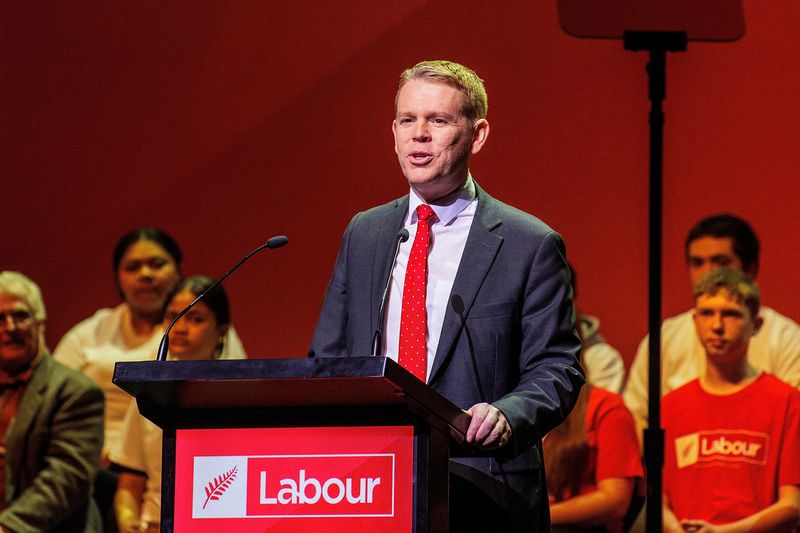By Lucy Craymer
WELLINGTON (Reuters) - Saturday is the final day to vote in the New Zealand national election, with the Labour Party seeking a third term and the centre-right National Party hoping to return to government with the help of coalition partners.
Advanced voting opened on Oct. 2. It is popular in New Zealand, with 68% voting ahead of the last election in 2020. The polls close at 7 p.m. NZDT on Saturday (0600 GMT).
National looks likely to win the largest proportion of votes in the election, but polls indicate that it will need at least one minor party, and maybe two, to form a government.
Voting in New Zealand elections is not compulsory but participation by eligible voters is typically above 80%.
WHAT IS THE STRUCTURE OF NEW ZEALAND'S PARLIAMENT?
Normally, there are 72 geographical constituency seats and then 48 seats are doled out to party-selected candidates, called "list members" in proportion to the overall public votes for each party. A party needs 61 seats for a majority.
The death of a constituency candidate means there will be an extra list seat allocated. A by-election will be held on Nov. 25 and from then, the total number of parliamentary seats will be 121.
HOW IS A GOVERNMENT FORMED?
Under New Zealand's mixed-member proportional system it is very uncommon for a single party to form government, although Labour did so under Jacinda Ardern in 2020.
If there is no majority winner, the major parties will start negotiations after the election and can either form coalition or supply and confidence agreements with minor parties. The party with the largest number of votes does not necessarily win, and negotiations can take days or weeks.
Under a coalition agreement, parties agree to be in government together. A supply and confidence agreement means they agree to support the major party but only in important matters such as a no confidence vote. Cooperation agreements, where the government agrees to work with another party even though it does not need its support, are also possible.
Ministerial positions for the minor parties may be up for grabs, and if a majority can not be formed, a second election will be needed.
WHAT ARE SOME LIKELY SCENARIOS?
Official results will be released on Nov. 3, which includes votes cast overseas. This has historically slightly changed the make-up of the government, and parties may wait to finalise agreements until these results are out.
In 2017, it took almost a month after the election before New Zealand First announced it would support the Labour-Green coalition. National, who held more seats, went into opposition.
Polls this time indicate New Zealand First, led by Winston Peters, will hold the balance of power.
Despite Labour and New Zealand First both publicly ruling each other out as potential coalition partners, analysts have little confidence those statements will stick.
The right-wing ACT Party has said it will support National, but will likely want to negotiate for its policies to be included in the government's agenda, including spending reductions.
WHAT ARE SOME KEY ELECTION ISSUES?
Rising prices and government debt have been hot-button topics. The country has a current account deficit that has spiralled to levels concerning to rating agencies, a budget in deficit since 2019, rents at record highs, unaffordable house prices, a labour market losing strength and an economy teetering on the brink of recession.
Race and relations with the Indigenous Maori population have emerged as issues as right-wing parties face accusations of stoking racial division. The country has seen protests against co-governance, a long-standing policy that has been taken up as a stand-in for fears Maori will take over the country.

Climate change is an issue. Both Labour and National supported the law that targets net zero greenhouse gas emissions by 2050. However, the rural sector and how that plays into emissions targets is more contentious. There is pushback on planting forestry on sheep and beef farms. National is promising to delay pricing for agricultural emissions to 2030. Labour plans to tax these from 2025.
For the first time in decades, foreign and defence policy are in the spotlight, as opinion surveys show public concern about the security environment and the major parties wrestle with how to respond to an assertive China. The parties say there is a largely bipartisan approach to foreign policy. One of the biggest challenges facing a new government is how to fund a flailing military.